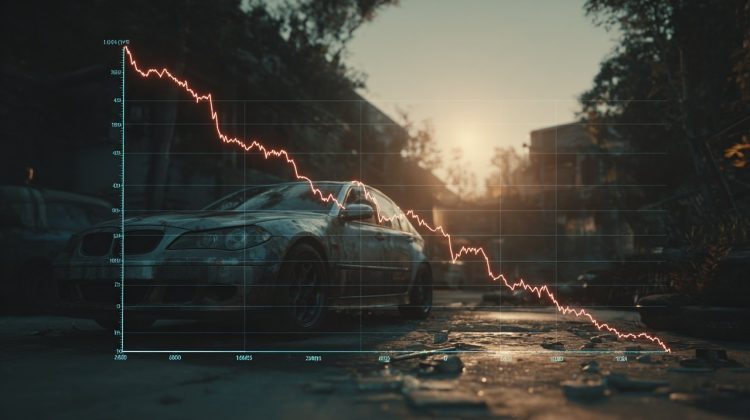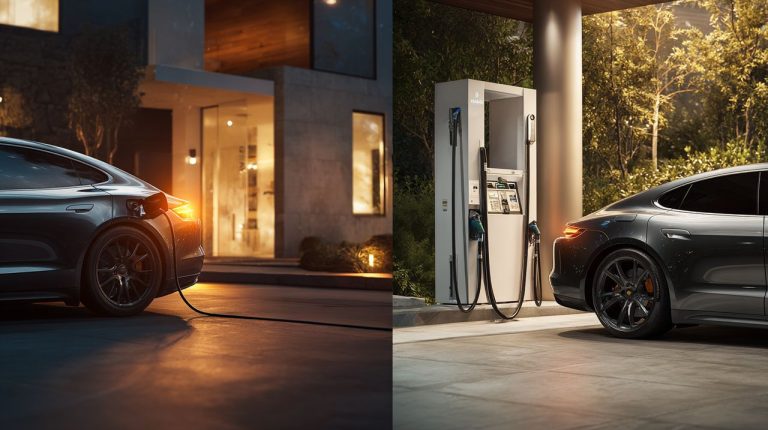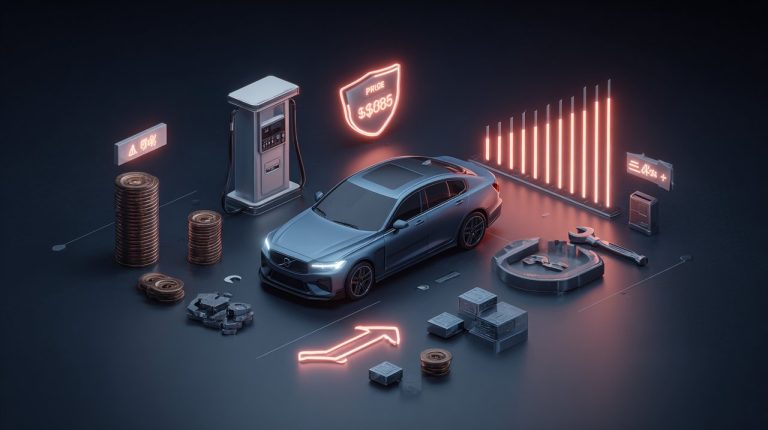When you’re considering a new or pre-owned vehicle, it’s natural for your attention to snap to that initial purchase price. Yet, focusing solely on this figure is like admiring a single component without understanding the entire system it belongs to. Just as we strive for seamless information flow in a well-designed digital environment, a truly informed car buying decision demands that you view the vehicle as part of a larger, dynamic financial ecosystem. Overlooking these interconnected elements can create significant financial friction, leading to unexpected costs down the road.
This guide is your comprehensive blueprint for assessing the true cost of car ownership, moving beyond the obvious numbers to reveal the complete financial landscape. Our goal is to empower you with clarity, enabling a decision that’s genuinely aligned with your financial well-being.

Initial Capital Outlay: Beyond the Advertised Price
The vehicle’s selling price is the most immediate figure that catches our eye, but it’s truly just the tip of the iceberg. To understand your initial capital outlay, we need to meticulously account for all upfront expenses. Think of these as the foundational layers of your financial structure.
What are these crucial upfront elements? They typically include sales tax, which can be a significant percentage of the purchase price, and various dealer fees. When you opt for financing, your down payment directly influences both the loan amount and the total interest you’ll pay over time.
“The true cost of entry is rarely just the ticket price; it’s the sum of all gates passed.”
This perspective is vital when considering the loan’s interest rate and term. While a lower monthly payment spread over a longer term might seem appealing at first glance, it often means you’ll pay substantially more in interest over the loan’s lifetime. For instance, a $30,000 car financed at 5% interest will accrue $3,959 in interest over 60 months, but that jumps to $4,792 if extended to a 72-month term. Understanding this dynamic is key to designing a cost-effective financial flow.
The Persistent Outflow: Decoding Depreciation’s Core Mechanism
Among the various costs of vehicle ownership, depreciation is arguably the most significant, yet it’s often the most overlooked. Think of it as a silent, continuous cash outflow – the steady loss in your vehicle’s value over time. This invisible drain profoundly impacts the financial equation when comparing new versus used cars.
New vehicles, much like cutting-edge software, experience their steepest decline in value during their initial phase. They can lose 20-30% of their value in the first year alone, and often up to 50% within three to five years. This rapid value erosion means a significant portion of your upfront investment simply evaporates without any tangible return.
In contrast, used cars have already absorbed much of this initial depreciation shock. They tend to depreciate at a much slower, more predictable rate. This often translates to a significantly lower overall ownership cost for used vehicles, even if their maintenance needs might be slightly higher.
To truly understand this hidden cost, calculate depreciation by subtracting the vehicle’s estimated resale value from its purchase price over your intended ownership period. Resources like Kelley Blue Book or Edmunds offer reliable market data to help you project future values, providing a clearer picture of this crucial financial dynamic.

Operating Efficiency: Fuel and Charging Dynamics
Beyond the initial purchase, the energy your vehicle consumes is a substantial and ongoing operational expense. This cost is highly variable, influenced by your vehicle’s fuel economy ratings and, crucially, your personal driving habits.
When evaluating options, don’t just look at the headline MPG or kWh/100 miles. Consider the type of fuel required; some performance vehicles, for instance, demand premium gasoline, which significantly adds to your running costs. For electric vehicles, your charging expenses will vary based on local electricity rates and whether you primarily charge at home or utilize public stations.
To gain clarity here, a straightforward calculation is incredibly helpful. Estimate your annual mileage, then multiply it by your vehicle’s fuel efficiency. For example, if you drive 12,000 miles per year in a car averaging 30 MPG with gasoline at $3.50 per gallon, your annual fuel cost would be $1,400. This operational cost acts as a continuous flow within your financial system, demanding consistent attention.
Protection and Premiums: Crafting Your Insurance Profile
Auto insurance premiums form another critical layer of your vehicle’s financial ecosystem. These costs are influenced by a complex web of variables, much like dependencies in a sophisticated software architecture.
What factors define your premium? They include the vehicle’s value, its make, model, safety features, typical repair costs, and even its theft rates. Your personal profile also plays a significant role, encompassing your driving history, age, geographic location, and credit score.
Generally, newer and more expensive vehicles will incur higher insurance premiums due to their higher replacement value. Older models might offer lower comprehensive and collision coverage costs, but remember that essential liability coverage – protecting against damage to others – remains crucial regardless of the vehicle’s age.
Before finalizing any purchase, we highly recommend obtaining insurance quotes for both new and used car options. This proactive step can reveal surprising differences in premiums, potentially shifting the overall financial advantage between vehicle types and helping you optimize your protective layer.
Longevity and Upkeep: Anticipating Maintenance & Repair Cycles
Ensuring your vehicle’s ongoing health is vital for both safety and its long-term viability within your financial plan. Yet, maintenance and repair costs are frequently underestimated in initial budget assessments.
There’s a significant difference in these expenses between new and used cars. New vehicles typically arrive with a manufacturer’s warranty, offering a predictable shield against major repair costs for a set period or mileage. However, even new cars require routine care like oil changes, tire rotations, and filter replacements – these are part of the standard operational flow.
Used cars, especially older models, may demand more frequent and potentially more expensive repairs as their components naturally age. To navigate this, it’s incredibly valuable to research the reliability records of specific makes and models. Furthermore, a pre-purchase inspection by a trusted mechanic for any used vehicle is a non-negotiable step. This acts as a crucial diagnostic, revealing potential issues before they escalate into costly surprises and disrupt your financial equilibrium.

Annual Administrative Layers: Taxes, Registration, and Fees
Beyond the major financial components, vehicles also come with recurring administrative costs – the often-overlooked layers that contribute to the overall ownership structure. These are typically annual expenses, and they vary based on your state and local regulations.
What are these layers? They include vehicle registration fees, which are mandatory for legal operation on public roads and can be based on the vehicle’s age, weight, or value. Many areas also impose annual personal property taxes on vehicles, calculated as a percentage of the car’s assessed value.
You might also encounter other fees for emissions testing, safety inspections, or specific local levies. While each of these might seem modest on its own, they collectively represent a consistent annual outflow. Failing to integrate them into your financial blueprint can create minor, yet persistent, financial friction.
Synthesizing the Ecosystem: Your Comprehensive Ownership Blueprint
An informed vehicle purchase is far more than a simple sticker price comparison; it’s about meticulously integrating all financial facets into a comprehensive ownership blueprint. By systematically evaluating each component – from your initial outlay and the profound impact of depreciation, to ongoing operational costs, insurance premiums, maintenance foresight, and those recurring administrative fees – you gain a truly holistic view.
This integrated approach transforms what might feel like a fragmented decision into a strategic financial choice. It empowers you to visualize the true cost over your intended ownership period, clearly revealing which vehicle genuinely aligns with your long-term financial goals and overall financial ecosystem.
To effectively construct your personal blueprint, we recommend creating a simple spreadsheet. This proactive calculation will illuminate the total financial commitment, enabling you to make a decision that is not only informed but also strategically sound and free from unforeseen financial friction. For even greater precision and ease, consider utilizing a dedicated tool designed to help you accurately project your total cost of ownership True Cost of Car Ownership Calculator.
💡 Frequently Asked Questions
The article's primary message is that understanding the true cost of car ownership extends far beyond the initial purchase price, requiring a comprehensive view of a larger, dynamic financial ecosystem that includes various interconnected expenses.
Beyond the initial selling price, key financial components include initial capital outlay (sales tax, dealer fees, down payment, interest), depreciation, operating efficiency (fuel/charging), insurance premiums, maintenance and repair cycles, and annual administrative layers (taxes, registration, and other fees).
Depreciation is highlighted as arguably the most significant yet often overlooked cost because it represents a silent, continuous loss in a vehicle's value over time. New vehicles experience their steepest value decline (20-30% in the first year, up to 50% in three to five years), while used cars depreciate at a much slower rate.
To effectively assess the total financial commitment, one should systematically evaluate all financial components mentioned. The article recommends creating a simple spreadsheet to construct a comprehensive ownership blueprint, integrating all costs to visualize the true cost over the intended ownership period.








